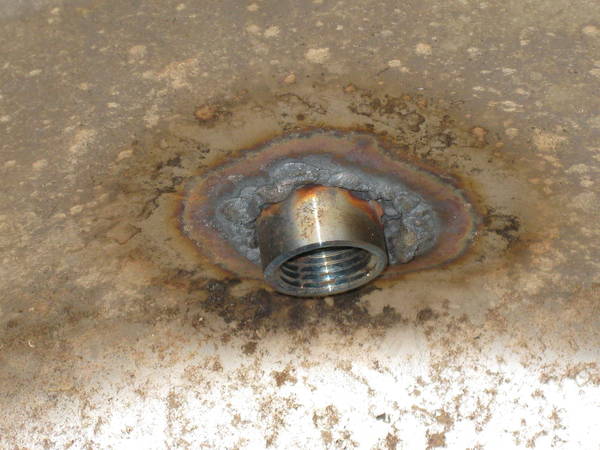I think my disappointment in other welders' work has turned this thread into a bit of an alarmist one. Let's clear a few things up.
"Sanitary welds" are sort of a misnomer. Any good weld will also be sanitary. Also, you don't need a completely sanitary environment in any hot side vessel. It just needs to be clean.
When you have stainless welded, it is HIGHLY preferable to have the back of the weld protected with either inert gas (called back-gassing) or flux. If it is not protected, the molten stainless alloy will tend to break down a bit and oxidize. As a result, the unprotected portion of the weld becomes bubbly and has a brittle, crystalline structure that is full of fissures and cracks. The oxidized surface will turn black, and with some alloys, it will have a powdery white coating (commonly called "sugar"). This problem does not manifest itself on the front of the weld, since any welding method includes some form of gas/flux protection on the torch/hot side. The major problems with a "sugared weld" are that the weld is much weaker than a proper weld, and, in a food environment, contaminants can hide in the fissures. It is also more at risk for corrosion.
From experience (I welded one keggle - my own - without backgassing), an improper weld on a stainless fitting will be plenty strong, and the black oxide finish will not corrode or rust in a wet environment. So, as long as you're not using these kegs for fermentation, there isn't a ton to be worried about. It's just unfortunate that the welder didn't do a better job.
To combat the problem of possible corrosion, some BKF and a stainless wire brush are probably all you need. If you want to pickle it properly, buy a chemical called, "Wonder Gel." It's a nitric acid blend that will re-passivate any stainless surface. Unfortunately, it's pretty expensive, and it's very nasty stuff.
www.mcmaster.com carries it. I don't think Wonder Gel is worth the expense unless the welds start to noticeably corrode after a few uses.
You'll probably never completely rid the welds of the bubbles, cracks, and fissures, but you can grind the ugliest of it off if you so desire. A Dremel or small die grinder is probably best suited to the job.
If I were to go to a welding shop for work on my stainless brew equipment, I would ask the following questions:
Can you TIG weld stainless?
How much experience do you have with it?
Can you back-gas all of the welds on this job?
How much will it cost...and will a few homebrews get me a discount?
If you get anything less than a positive, knowledgeable answer to any of these questions, consider using another shop, or using weldless fittings.








